| Day 04 ANTAKYA April 20, 2010 Tuesday |
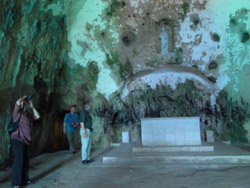
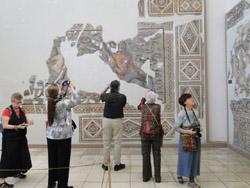
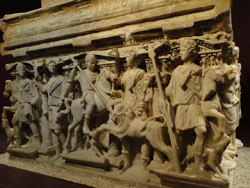
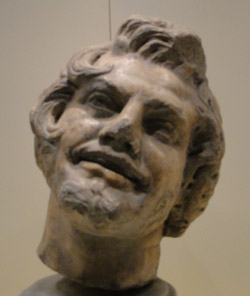
|
Antakya was called Antioch on Orontos in the Roman era. According to the Bible, the followers of Jesus were called "Christian" here in this city. St. Peter and St. Paul had worked together to pass the word of God on to the people of this city. In 47 AD. The people who were called "Christian" to be differentiated from the Gentiles used this little cave. The passages carved in to the depths of the mountain were used by the Christians to run away from the Roman furry against the church members.
Now called " The Church of St. Peter", is claimed to be the first church. The facade was built during the Byzantine era. We did not spend too much time here. Appreciating the difficult life of the early Christians, we left the church and droved down the hill to the museum of Antakya.
Antakya museum reflects the grandeur of the life of the Antiochians during the time when St. Paul and St. Peter were living here, the 1st Century AD.
The big smile on the face of this man and huge mosaic used on the walls and floors of the houses and the beautifully crafted sarcophagi were immortalizing an era which is hard to forget. |
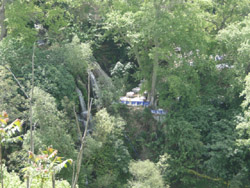 |
| Our next stop was Harbiye or as the locals call it Daphne. We could look down at a gorge where the water fall was flowing down in to a thick forest. According to the mythology, Apollo saw a beautiful girl taking a bath in this waterfall. He wanted to possess her. The scared girl pleaded her mother for to save her. The mother, Goddess of the forests, persuaded her daughter that she would be saved. But as Apollo approached her, the girl got more scared and started to run away. Determined Apollo caught up with her. However, the goddess of the forests kept her promise. The legs of the girl started to transform to a trunk of a tree and her arms became branches. Apollo, with one last hope reached out and held the hand of the girl. that was a magic touch. the girl felt the fire of love in her heart. but it was too late. she now was a tree and the heart felt love for Apollo was captured in the wonderful smell of the leaves on her transformed body - the bay leaves or the Daphne tree. |
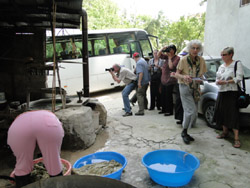
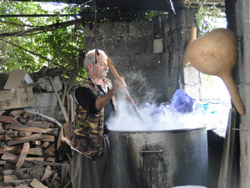
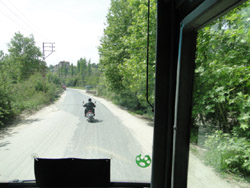
|
In Harbiye, the main income of the people is silk weaving. We stopped at the first shop of the town and asked if we could see their home where they spin the silk and weave. Yilmaz had a big smile on his face and said," follow me". He hopped on his motorbike and we followed him. our driver was quite amused that he was chasing his motorcycle in the narrow streets of this village. When we arrived at his house, his father Hasan Buyukasik was boiling the silk. the excitement of the group was amazing. The old man, not only was he a wonderful craftsman but he was a great story teller |
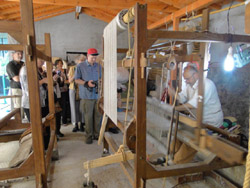
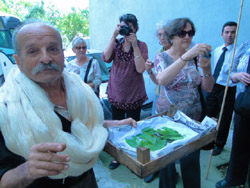
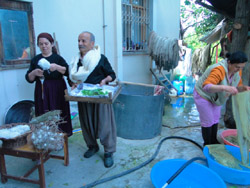
|
| He quickly told us the story of his life.He said all he wanted to do in his life was be a silk weaver . He loves his job more than any thing else. but he also is in love with his wife who has always been of help to him. his children are in business with him. He showed us his baby silk warms and explained every thing we need to know about silk and silk dying and silk weaving.When we returned to his son's shop, the colorful beautiful silk scarves, table clothes, shirts had a complete different meaning for all of us. Every one in the group ended up buying a small sample of what might have been woven on the looms at Hasan's looms. YILMAZ IPEKCILIK - Caglayan Mahallesi Urgen Cad. Harbiye Antakya +90 326 231 4375 / + 90 532 334 7123 Our next stop is Senkoy - "Happy village". Visiting a village in Turkey and spending time with the locals always means that you would be experimenting a wonderful hospitality and you would be welcomed by every one. Our first stop at Senkoy was Ayse's house. the grand ma who had ten children and more than fifty grandchildren was no longer running errands in the house. She meets the guests and sits in her comfortable corner. the rest of the house hold does the work. when we arrived at the house, Ayse started filling in the ton dour with dry olive tree branches . While we were waiting for the fire to heat the ton dour and change the color of the terra cotta oven from black to white, we started beating the dough and prepared the little round breads. It did not take long to bake the "biberli ekmek". the table was prepared in the shade of the street, there was enough bread to feed an army. |
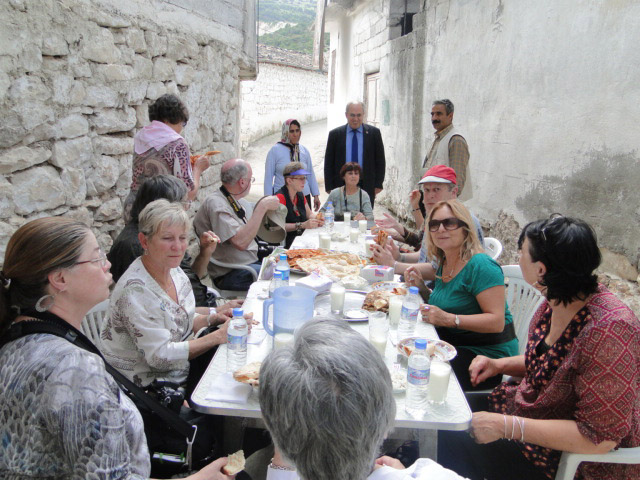
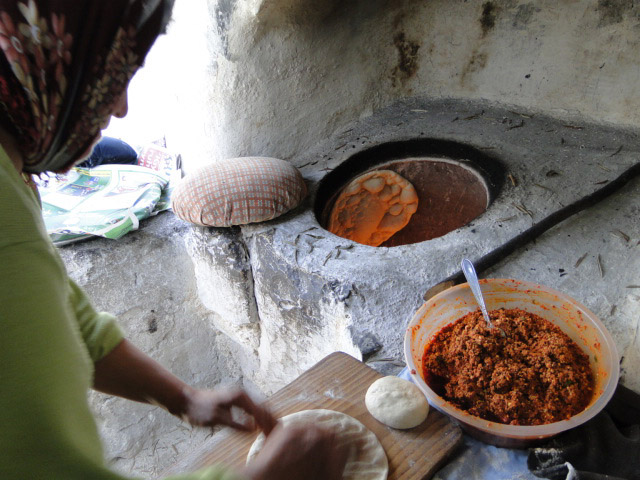

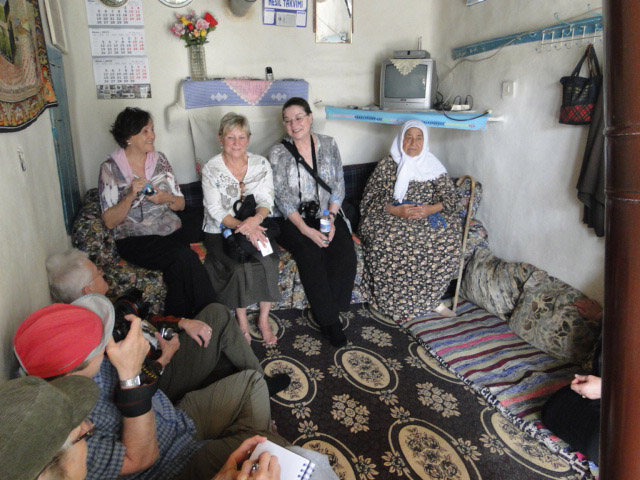
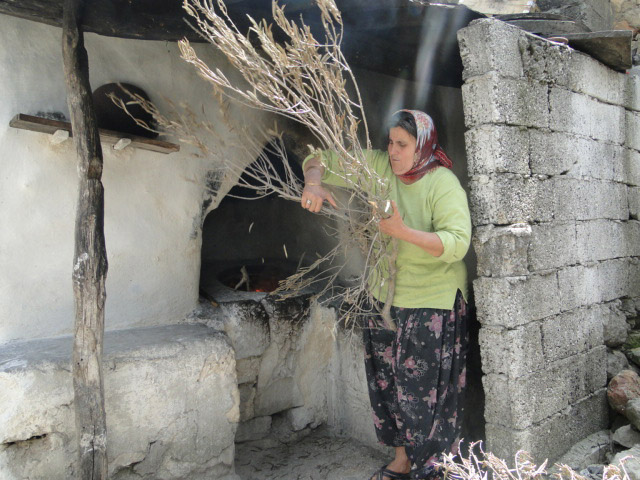
|
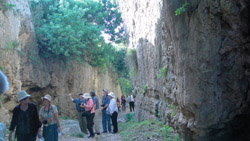 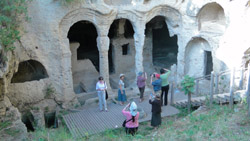 |
We sat around the table. Just as we started enjoying the meal, a gentleman in a dark blue suit came to greet us. He was the mayor of Senkoy. After he welcomed us to his village, he started telling us why his village was very important. He had a big picture book of Senkoy in his hand. He carefully went over every page making sure that we appreciated the history and the natural beauty of the settlement. He stopped talking only when he was informed that the folk dancers were waiting for us for their performance. We quickly thanked the family who had hosted us and ran to the village center to enjoy the folk dance and music. |
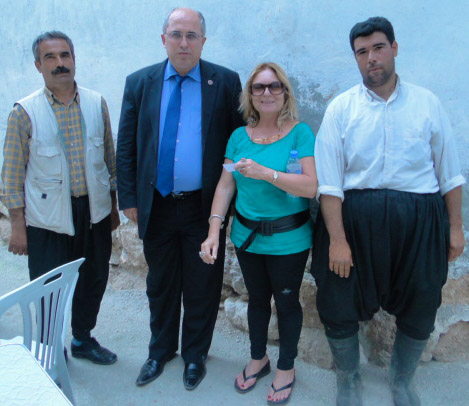  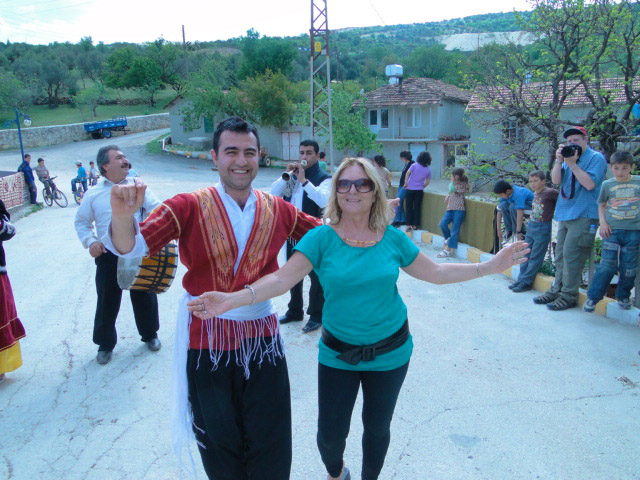 |
When we were ready to say good bye to Senkoy, we knew every thing about the ancient churches, the ancient trade route and the importance of the village in the history of the Ottoman history.
The Mayor:Mustafa Sayin
Senkoy Belediye Baskani
Senkoy - Antakya - Hatay
Phone: 0326 296 2200-01 0532 666 6275 |
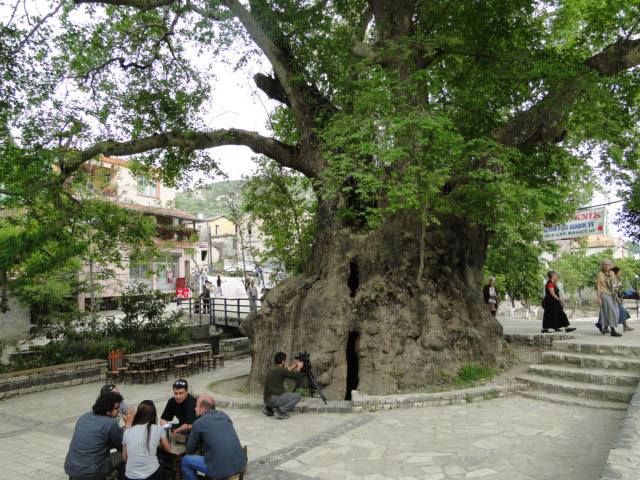
We returned to Antakya via small villages. We visited an Armenian church and had tea under a 1600 year old tree.
We had wonderful time in Antakya |
